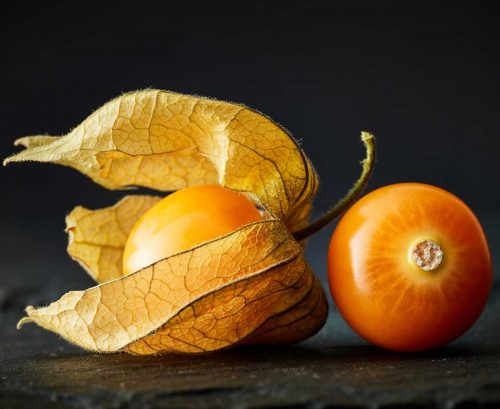
There is no such thing as a ‘super food’ that provides our body with everything it needs. Specific vegetables and fruits have a unique set of nutrients to offer us, which is why the key to a healthy diet is eating as wide a variety as possible. But it can be too easy to keep buying the same produce week in, week out. If you’re really going to get the maximum benefits from eating fruit and vegetables, it’s time to try something new. Here are six lesser known fruit and veg you can eat more of.
1 Purple cauliflower
Purple cauliflower is a variety of cauliflower that is slightly nuttier and sweeter than the white kind.
It can be prepared in the same ways you’d use white cauliflower, but the purple colour will fade after cooking.
Purple cauliflower is a good source of fibre, with 1 cup providing 3g, as well as vitamin C, folate and potassium.
The purple colour indicates the presence of anthocyanins, which are antioxidant compounds that also give dark berries their colour. Purple cauliflower also contains glucosinolates, which have been associated with reducing the risk of certain cancers.
2 Kamo kamo (kumi kumi)
This heirloom squash is native to New Zealand and has a pleasant, nutty flavour.
Kamo kamo can be used, while young and tender, as you would a marrow or, when mature, as you would a pumpkin. You can also eat kamo kamo blossoms.
As with other squashes, kamo kamo is an excellent source of fibre which is essential for digestive health and protective against certain cancers. It also adds to you daily vitamins C and A, which are beneficial for immunity and other essential body functions.
3 Bitter melon
Bitter melon, also called karela, bitter gourd or fu quas, is used in Asian cuisine, and well suited to stir-fries, stews or curries.
It takes a bit of preparation before use – removing seeds and pith and blanching – to reduce the bitterness.
The seeds are a laxative, so it pays not to skip this step.
For your work you’ll be rewarded, though, as bitter melon is a good source of vitamin C, with 31mg in 3/4 cup cooked melon equalling nearly half the amount in an orange.
It’s also known for reducing blood sugar levels, but don’t rely on it to help you come off diabetes medications and be careful of how much you eat.
4 Loquats
Loquats are a guava-like yellow fruit that are generally eaten raw or made into jelly, preserves, liqueurs or wine.
The loquat tree is a bit of a weed, in some places, but is more likely to be your source of the tangy fruit than the supermarket.
Loquats provide small amounts of a wide range of nutrients. Five loquats provide around 1.4g fibre, important for bowel health, and around 200mg of potassium, important for maintaining healthy blood pressure.
5 Kohlrabi
Kohlrabi is popular in Germany and is a bit like a combination of cabbage and turnip, but sweeter.
Kohlrabi contains vitamins C and B6, thiamin, folate, potassium and fibre. Like other members of the brassica family, it contains beneficial phytonutrients.
Kohlrabi is delicious stir-fried, mashed, or grated for slaws and salads. Usually, it’s the bulb that is eaten (once peeled and cored) but the leaves can also be used – just cook them similarly to kale.
6 Cape gooseberries
Cape gooseberries grow encased by a papery outer covering which you peel away to reveal the small shiny golden fruit within. They have a sweet, slightly tart flavour and are best eaten raw, as is. But you can make preserves from them if you have a lot.
Cape gooseberries have lower antioxidant activity than their more vibrant red gooseberry cousins, but you’ll get 3g fibre in a half-cup serve as well as two-thirds of the amount of vitamin C that you’d get from an orange, which is pretty impressive.
Article sources and references
- Arumugam A & Razi AF. 2017. Apoptosis as a mechanism of the cancer chemopreventive activity of glucosinolates: A review. Asian Pacific Journal of Cancer Prevention 19:1439-48https://www.ncbi.nlm.nih.gov/pubmed/29936713
- Namiesnik J et al. 2013. Antioxidant activities and bioactive components in some berries. Eur Food Res Technol 237:819–829https://link.springer.com/article/10.1007/s00217-013-2041-7
- National Health and Medical Research Council and Ministry of Health. Recommendations to Reduce Chronic Disease Risk, nrv.gov.au/chronic-disease/ summary Accessed June 2019https://www.nrv.gov.au/chronic-disease/
- Pandey KB & Rizvi SI. 2009. Plant polyphenols as dietary antioxidants in human health and disease Oxidative Medicine and Cellular Longevity 2: 270-8https://www.ncbi.nlm.nih.gov/pmc/articles/PMC2835915/
www.healthyfood.com













